In “The Role Of Soil Health In Pest Management,” you will discover the crucial connection between the health of your soil and effective pest control. By focusing on enhancing the quality of your soil, you can create an environment that naturally repels pests and reduces the need for harmful chemicals. We will delve into the relationship between soil health and pest infestations, providing you with valuable insights and practical tips for achieving a pest-free environment.
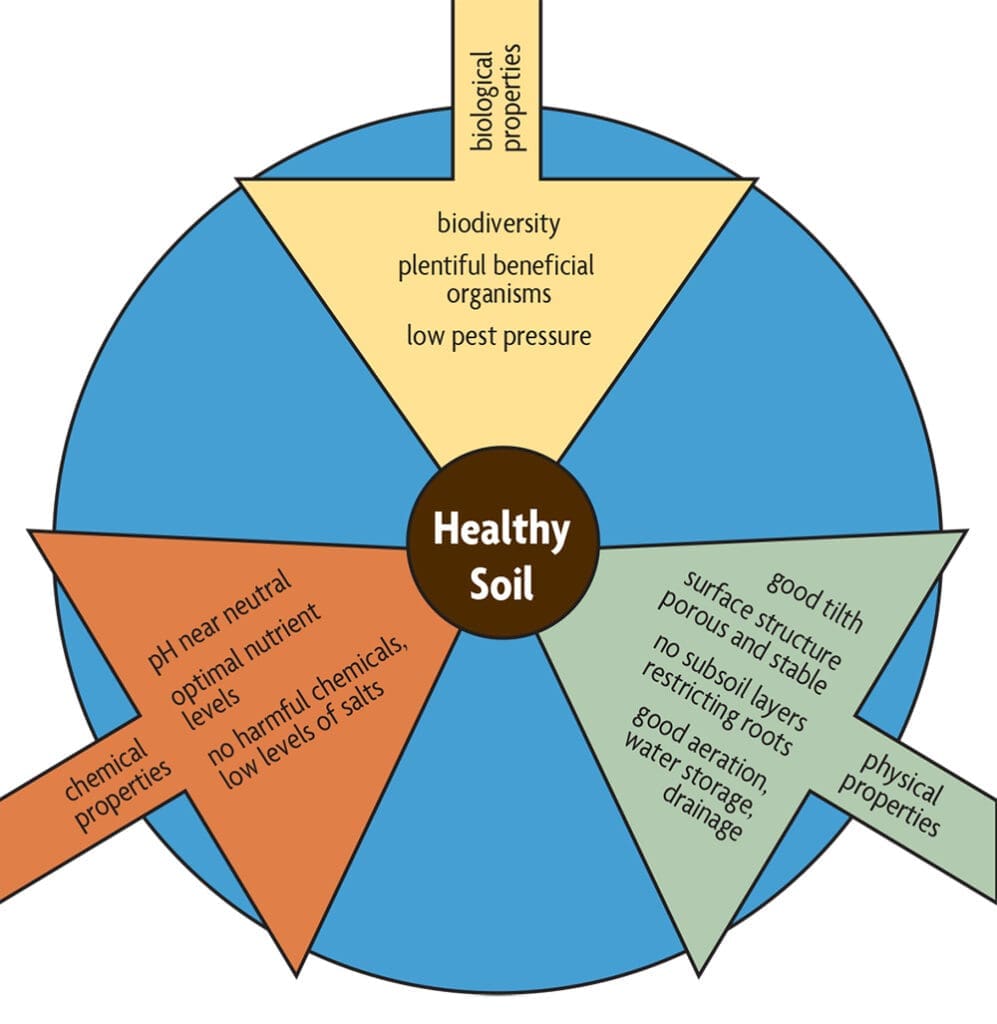
1. Understanding Soil Health
1.1 Importance of soil health
Maintaining soil health is crucial for successful pest management. Soil serves as the foundation for plant growth and provides nutrients, water, and physical support to plants. Healthy soil promotes strong and resilient plants, which are better able to withstand pest infestations. By nourishing the soil, you create an environment that supports beneficial organisms and discourages pests.
1.2 Factors influencing soil health
Several factors influence soil health, including soil composition, pH levels, organic matter content, nutrient availability, and water drainage. Each of these factors plays a vital role in creating a favorable environment for beneficial organisms, while also deterring pests. Additionally, the presence of certain pollutants or contaminants in the soil can negatively impact the health of both plants and beneficial organisms.
1.3 Assessing soil health
Regular assessment of soil health is crucial to identify any deficiencies or imbalances that may affect pest management. Various methods can be used to evaluate soil health, such as soil testing, analysis of nutrient content, and monitoring microbial activity. By understanding the current state of the soil, you can make informed decisions about necessary interventions and improvements.
2. Soil Health and Pest Interactions
2.1 Pest population dynamics and soil health
Soil health can significantly influence the dynamics of pest populations. Unhealthy or imbalanced soil conditions can lead to weakened plants, making them more susceptible to pest attacks. Conversely, healthy soil supports robust plant growth, providing a natural defense mechanism against pests. Additionally, beneficial organisms present in healthy soil can help control pest populations by preying on or deterring them.
2.2 Effects of soil health on pest behavior
The quality of the soil can impact the behavior of pests. Soil conditions that lack essential nutrients or are overly compacted can adversely affect the development and reproduction of pests. On the other hand, well-nourished soil can support plant growth, leading to the production of natural compounds or substances that repel pests. By improving soil health, you create an environment that is less favorable for pest infestations.
2.3 Soil health indicators for pest management
Certain indicators can help determine the impact of soil health on pest management. These include the presence or absence of beneficial organisms, the level of organic matter in the soil, and the nutrient content. Monitoring these indicators provides valuable insights into the overall state of the soil and its ability to support healthy plant growth and pest management.
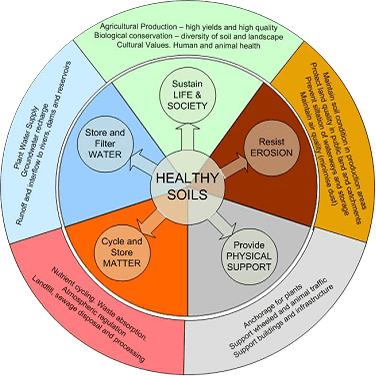
3. Enhancing Soil Health for Pest Management
3.1 Organic matter and soil fertility
Organic matter plays a crucial role in maintaining soil health. It enhances soil fertility by improving nutrient content, water-holding capacity, and physical structure. Adding organic matter through compost, cover crops, or green manure increases beneficial microbial activity, promotes nutrient cycling, and improves soil structure, all of which contribute to pest management.
3.2 Nutrient management practices
Proper nutrient management is essential for promoting healthy soil and effective pest management. Soil testing helps determine nutrient deficiencies or excesses, allowing you to adjust fertilizer application accordingly. By providing plants with optimal nutrition, you enhance their resistance to pests and diseases.
3.3 Crop rotation and diversification
Rotating crops and diversifying plant species has long been recognized as a crucial practice for maintaining soil health and managing pests. Pest populations tend to build up when the same crop is continuously grown in the same area, as pests adapt and become resistant to control measures. By rotating crops, you disrupt pest reproduction cycles and reduce populations, while also preventing nutrient depletion and soil-borne diseases.
3.4 Cover cropping
Cover cropping involves planting specific plants during off-seasons to cover and protect the soil. These plants help prevent erosion, improve soil structure, increase organic matter, and suppress weed growth. Cover crops also attract beneficial insects and nematodes, which can help control pests naturally.
3.5 Conservation tillage
Conservation tillage is a practice that minimizes mechanical soil disturbance. By reducing or eliminating intensive plowing or tilling, soil structure and organic matter content can be better preserved. This method helps maintain soil health, as it minimizes soil erosion, increases water retention, and promotes beneficial microorganisms.
3.6 Biological control and soil health
Promoting biological control is an effective and sustainable pest management strategy. Healthy soils provide an ideal habitat for beneficial organisms, such as predatory insects and mites, nematodes, and certain microorganisms. These natural enemies can feed on pests or parasitize them, reducing pest populations naturally and reducing the need for chemical interventions.
3.7 Integrated pest management (IPM)
Integrated Pest Management (IPM) is a holistic and sustainable approach to pest management that considers the entire ecosystem. By integrating various pest control methods, such as cultural practices, biological control, and targeted pesticide use, with a focus on soil health, you can effectively manage pests while minimizing environmental impacts.
4. Soil Health Monitoring and Testing
4.1 Soil sampling techniques
To assess soil health accurately, proper soil sampling techniques must be employed. Soil samples should be collected from multiple locations within the field to account for any variations. It is important to use appropriate sampling tools and follow sampling depth guidelines. The collected samples can then be tested for various parameters, such as pH levels, nutrient content, and organic matter.
4.2 Assessing soil fertility
Assessing soil fertility is an essential aspect of soil health monitoring. Soil testing laboratories can provide detailed analysis reports that indicate the nutrient makeup of the soil. This information helps determine if any nutrient deficiencies or imbalances exist, enabling you to make informed decisions about nutrient management.
4.3 Monitoring soil microbial activity
Soil microbial activity is indicative of soil health and plays a crucial role in nutrient cycling and disease suppression. Monitoring microbial activity can be done through techniques such as measuring respiration rates or analyzing microbial biomass. These measurements help assess the overall microbial diversity and activity in the soil.
4.4 Soil quality assessment
Soil quality assessment involves evaluating multiple soil properties and indicators to determine overall soil health. This assessment considers factors such as physical structure, nutrient content, organic matter levels, and microbial activity. By conducting regular soil quality assessments, you can track changes in soil health over time and implement suitable interventions for sustainable pest management.
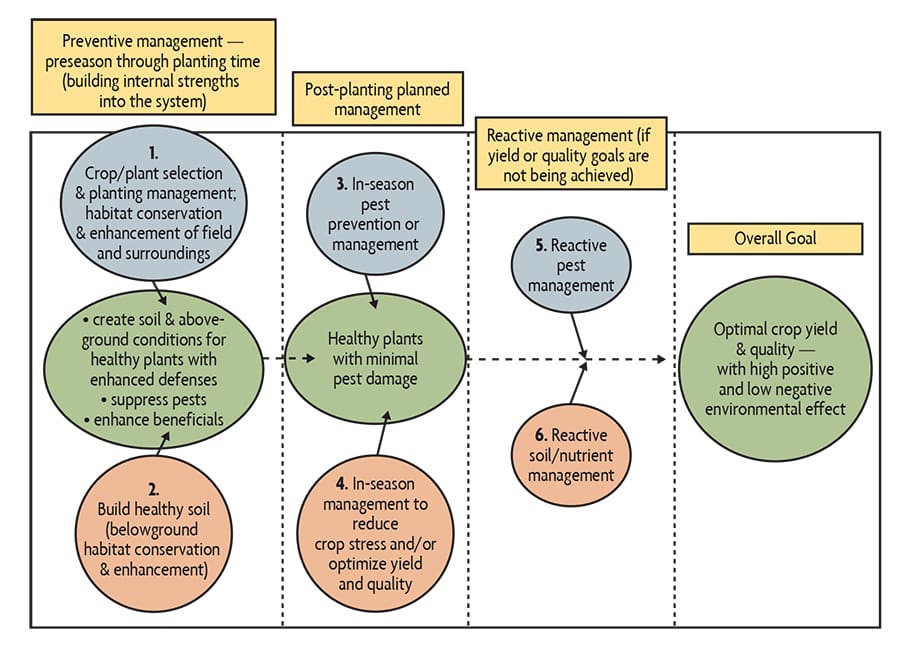
5. Beneficial Soil Organisms for Pest Control
5.1 Introduction to beneficial soil organisms
Beneficial soil organisms play a crucial role in pest control by preying on or parasitizing pests, while also contributing to soil health. These organisms include predatory insects and mites, nematodes, and various microorganisms. Encouraging their presence through healthy soil management practices improves pest control outcomes while reducing reliance on chemical pesticides.
5.2 Predatory insects and mites
Predatory insects and mites are natural enemies of many pests. They feed on pests, reducing their populations and minimizing crop damage. By maintaining suitable habitats for these beneficial organisms, such as providing flowering plants for nectar and alternative prey, you can enhance their presence and effectiveness in pest management.
5.3 Nematodes
Nematodes are microscopic worms that can be beneficial or harmful to plants. Beneficial nematodes, known as entomopathogenic nematodes, are used for biological pest control. These nematodes parasitize insect larvae, ultimately leading to their death. By harnessing the power of beneficial nematodes, you can control pests effectively while promoting soil health.
5.4 Microorganisms for soil health and pest control
Numerous microorganisms, such as bacteria, fungi, and protozoa, inhabit the soil and contribute to its health and pest management. Some microorganisms form beneficial associations with plant roots, facilitating nutrient uptake and disease resistance. Others produce natural compounds that repel pests or suppress pathogens. Promoting the presence and activity of these microorganisms through proper soil management practices is crucial for effective pest control.
6. Soil Amendments and Biopesticides
6.1 Compost and organic soil amendments
The use of compost and organic soil amendments is an effective means of improving soil health and controlling pests. Compost adds organic matter to the soil, enhancing nutrient content and microbial activity. It also improves soil structure, which aids root development and increases water-holding capacity. By incorporating compost and other organic amendments, you create a favorable environment for beneficial organisms and promote sustainable pest management.
6.2 Biopesticides for pest control
Biopesticides are naturally derived products that control pests while minimizing environmental impacts. These include microbial-based biopesticides, such as bacteria or fungi, which can target specific pests. Biopesticides offer an alternative to chemical pesticides, providing effective pest control while preserving soil health and the overall ecosystem.
6.3 Use of microbial inoculants in pest management
Microbial inoculants are formulations containing beneficial microorganisms that can be applied to the soil or plant surfaces to enhance pest management. These inoculants can promote the presence of specific beneficial microorganisms, such as those that repel pests or suppress diseases. By introducing these microorganisms into the soil, you can enhance soil health and pest control simultaneously.
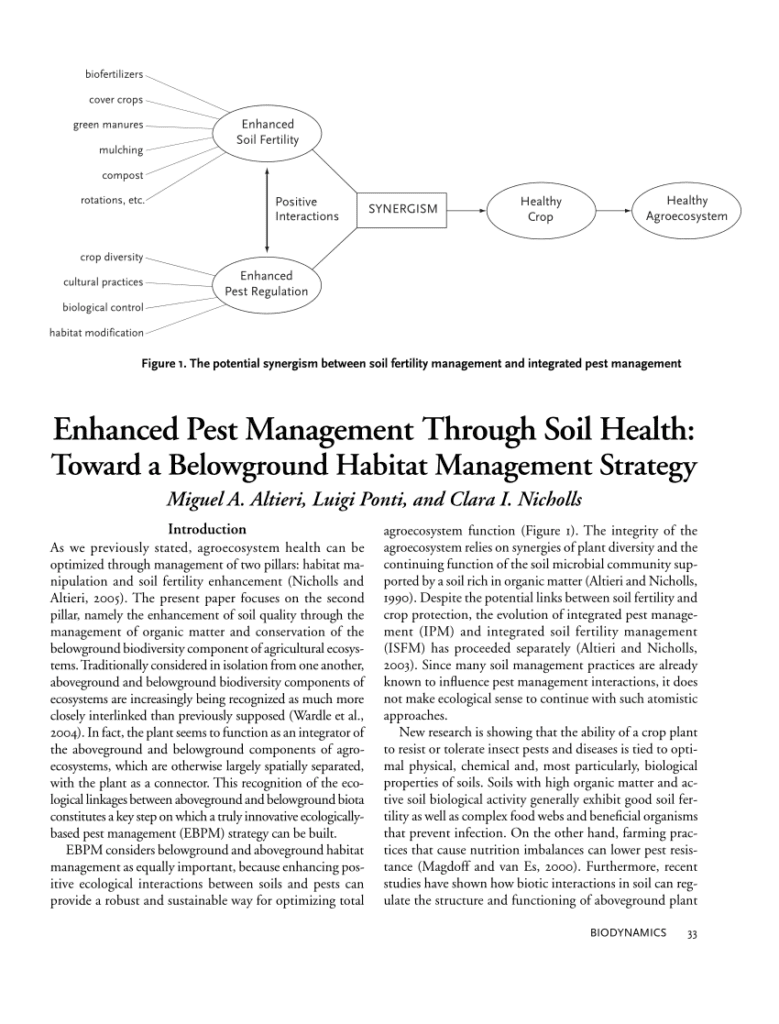
7. Soil Health and Resistant Crop Varieties
7.1 Importance of resistant crop varieties
Planting resistant crop varieties is an essential component of pest management strategies. Resistant varieties are naturally more capable of withstanding pest infestations, reducing the need for intensive pest control measures. By selecting and cultivating resistant crop varieties, you not only improve pest resistance but also enhance soil health by minimizing the use of chemical pesticides.
7.2 Selecting and breeding resistant crop varieties
The selection and breeding of resistant crop varieties involve identifying plant traits that confer resistance to specific pests and diseases. Through selective breeding or genetic modification, plant breeders can develop varieties with improved resistance. By incorporating resistant crop varieties into your farming practices, you can effectively manage pests while promoting soil health.
7.3 Soil health and plant resistance
Soil health directly influences plant resistance to pests and diseases. Plants growing in healthy soil have access to adequate nutrients and water, leading to vigorous growth and increased resistance to pests. Strong root systems developed in healthy soil also enable plants to withstand pest attacks more effectively. By prioritizing soil health, you provide a solid foundation for plant resistance and successful pest management.
8. Integrated Pest Management (IPM) and Soil Health
8.1 Overview of integrated pest management
Integrated Pest Management (IPM) is a systematic approach to pest management that combines various strategies and techniques to minimize the use of chemical pesticides. It emphasizes the integration of pest control methods, including cultural, biological, and chemical methods, to achieve long-term pest management solutions. By incorporating soil health considerations into IPM programs, you can enhance pest control outcomes while promoting sustainable agriculture.
8.2 Incorporating soil health in IPM strategies
Soil health considerations should be an integral part of any IPM strategy. By prioritizing practices that enhance soil health, such as crop rotation, cover cropping, and organic soil amendments, you create an environment that supports beneficial organisms and promotes plant resilience. This, in turn, reduces pest pressures and contributes to the overall success of the IPM program.
8.3 Long-term sustainability through IPM and soil health
By integrating soil health management into IPM programs, you create a sustainable and resilient agricultural system. Prioritizing soil health not only enhances pest management outcomes but also leads to improved crop productivity, reduced environmental impacts, and long-term economic sustainability. Investing in soil health and implementing IPM strategies ensures the long-term viability of pest management practices.
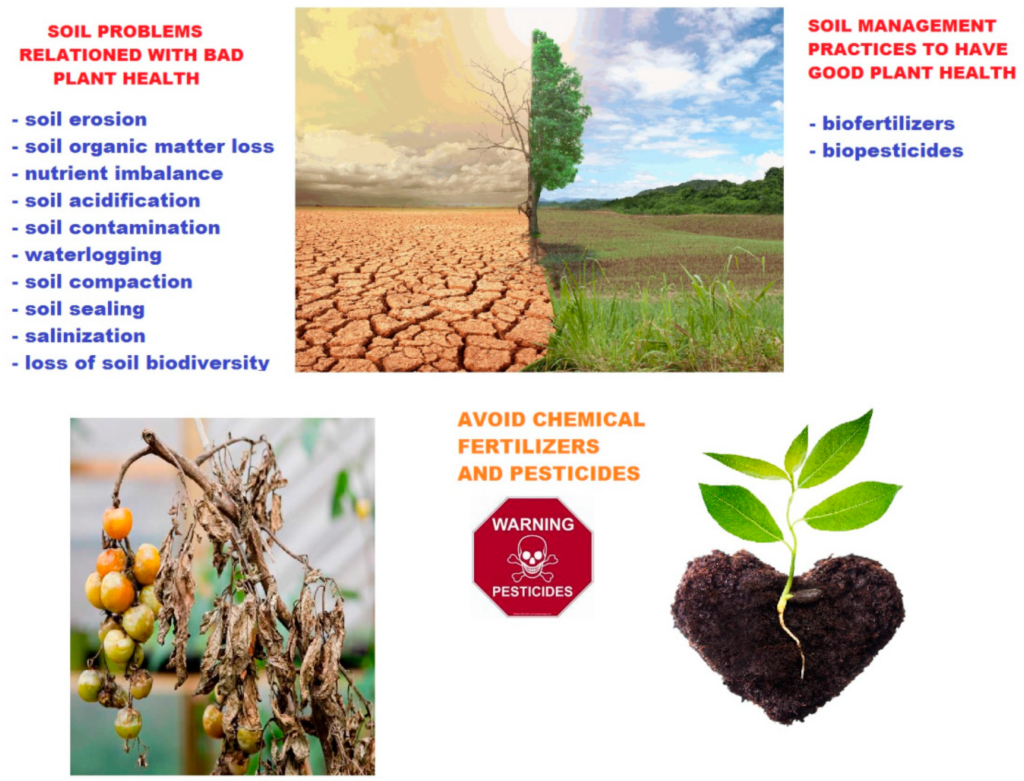
9. Case Studies and Success Stories
9.1 Successful pest management through soil health
Numerous case studies demonstrate the successful integration of soil health practices into pest management strategies. One example is the use of cover crops to control pests in organic farming systems. By planting cover crops, farmers have experienced reduced weed pressure, decreased pest populations, and improved overall soil health. These success stories highlight the effectiveness of soil health interventions in promoting sustainable pest management.
9.2 Real-life examples of soil health interventions
Several real-life examples showcase the effectiveness of soil health interventions in pest management. In one case, a farmer implemented crop rotation and cover cropping to combat nematode infestations. This practice helped break the nematode lifecycle and promote beneficial nematodes, resulting in reduced pest pressures and improved crop yield. These examples emphasize the practicality and benefits of adopting soil health practices for pest control.
9.3 Economic and environmental benefits
Investing in soil health for pest management offers numerous economic and environmental benefits. By reducing reliance on chemical pesticides, farmers can minimize input costs, while also avoiding potential negative impacts on human health and the environment. Healthy soils support sustainable agriculture, enhance crop productivity, and contribute to long-term economic viability. The economic and environmental benefits of soil health interventions make them a sound investment for any pest management strategy.
10. Future Directions and Research
10.1 Emerging trends in soil health and pest management
Ongoing research and technological advancements continue to shape the future of soil health and pest management. Emerging trends include the development of precision agriculture techniques that integrate soil monitoring technologies, remote sensing, and data analytics for optimized pest management. Additionally, research on the use of biological control agents, biochar application, and soil amendments for pest control and soil health improvement shows promise for future implementation.
10.2 Promising research areas
Several areas of research hold promise in advancing soil health and pest management. Investigating the interactions between soil fertility, plant microbiome, and pest resistance could provide valuable insights into more targeted pest control strategies. Understanding the impacts of climate change on soil health and pest dynamics can help develop adaptive management practices. Additionally, exploring the role of soil health in managing emerging pests and invasive species presents exciting research opportunities.
10.3 The role of technology in soil health monitoring
Technology plays a crucial role in advancing soil health monitoring and pest management practices. Innovative tools, such as sensor-based technologies, aerial imaging, and remote sensing, enable precise assessment of soil conditions and pest pressures. Data analytics and modeling techniques further enhance decision-making processes by providing real-time insights and predictive analytics. Applying technology in soil health monitoring contributes to more efficient and effective pest management strategies.
In conclusion, soil health is a fundamental aspect of successful pest management. By prioritizing soil health through practices such as organic matter addition, nutrient management, crop rotation, and biological control, you create a resilient and sustainable agricultural system. Regular monitoring, soil testing, and the integration of beneficial soil organisms further enhance pest control outcomes. When soil health is prioritized alongside integrated pest management strategies, you promote long-term sustainability, economic benefits, and positive environmental impacts. Through continuous research and technological advancements, the future of soil health and pest management promises exciting opportunities for more effective and efficient practices.

I am Randy, the author behind PestControld.com. Drawing from decades of experience, I aim to provide valuable insights, expert advice, and practical recommendations to help you make informed decisions when assessing viable pest control solutions.